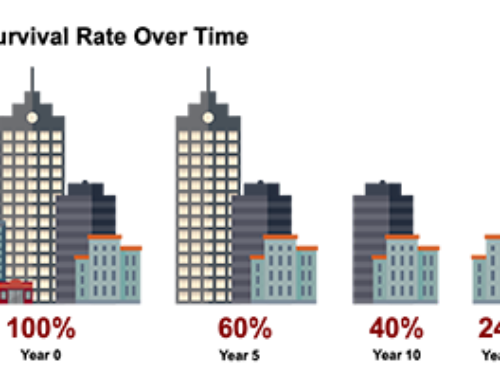By Debra Mervyn, The Mervyn Group and Paul Menig BusinessAccelerants.com
Survive and Thrive as a Small Electronics Manufacturer in America in 2021
In the wake of 2020, Ascentron, like many Electronics Manufacturing Services (EMS) companies, is reassessing its business strategy. In the face of changing and fluctuating markets, government regulations, taxes, and supply chain instability, the need for a comprehensive, integrated, well-defined strategy, backed by an achievable tactical business plan is of paramount importance. How does a company continue to survive, thrive and chart a course for growth? It relies on its B.O.S.S.—Business Operating System Strategy™ developed two decades ago. For Ascentron, B.O.S.S. means repeatedly Reassess, Reinvent, and Rebuild all aspects of its business.

Since 2002, Ascentron has built a reputation for excellent customer service, detailed program management, rapid Customer response and technical expertise of its leadership and employees. Over the past 15 years, Ascentron has participated in the IPC EMS Management Council, implemented a diverse and comprehensive sales plan, optimized the effectiveness and efficiency of its operations to improve profitability, invested in equipment, automation and technology, and minimized debt. This approach encompasses hard work across many parts of the company.
At the end of 2001, the dotcom bust and aftermath of 911 hit and much of the electronics industry in America was in free fall. Factories across the country were laying off employees or closing completely. In Oregon large companies, including Solectron, Epson, Fujitsu, Hewlett Packard, and Tektronix, were closing factories. Many smaller, feeder businesses in the electronics industry were in difficult positions. That year, during a 90-day period, two of MTS’s (Ascentron’s prior company) the largest customer went out of business, two moved their production offshore, and others drastically reduced orders. At this dire time, David Hollingsworth and Rick Smith, the President of MTS, bought what was left of MTS and restructured it as Ascentron. They saw an opportunity and knew survival required doing things differently with the new company. David Hollingsworth, VP Business Development/Founder, created their B.O.S.S.—Business Operating System Strategy™ on the principals of Reassess, Reinvent, and Rebuild all aspects of the company.

B.O.S.S. encompasses all aspects of a business both internal and external, way beyond typical a quality management systems.
Reassess
Ascentron began to Reassess global market for electronic manufacturing services, its current and future customers, and the company’s strengths and weaknesses.
In 2002, it was clear that high volume and price sensitive projects would move offshore. Ascentron knew their best customer prospects would seek an accessible manufacturing partner with whom it was easy to communicate and was located in America. Many of these customers would need a high level of technical capabilities. Target industries would be aviation, medical device, military, and industrial instrumentation. At the time, less than 20% of Ascentron’s sales came from these target industries.
Target customers would be attracted to Ascentron’s core strengths of responsiveness, strong work ethic, low cost, and technical capabilities. The company planned to turn its weaknesses into strengths and focused on improvements in the management team, quality, equipment, and cash reserves.
Reinvent
Based on the initial step of Reassess, an plan was developed to Reinvent Ascentron to provide responsive, high-quality, leading-edge EMS services to customers with low to medium volume requirements. This was a new vision and mission for the company. Aviation, medical device, military, and instrumentation industries were prioritized along with target customers defined as small companies and major multinational corporations, if their projects fit the new vision and mission. Immediately, Ascentron realized the process of a REASSESSMENT, REINVENTION, and REBUILDING would not have a beginning and end, but be an ongoing evolutionary process of continual improvement, much like PDCA of Plan Do Check Act. The company moved to the next phase Reinventing Ascentron focusing on people, processes, and equipment.
As part of the Reinvent step, Ascentron focused on people—hiring the best talent, investing in employees by providing training and educational opportunities, and profit sharing. Due to the dot.com bust great talent was looking for new opportunities. The company was able to hire key management team members with extensive experience at General Dynamics, Plexus, Tektronix, Grass Valley Group, and Tyco Electronics. Filling critical positions allowed Ascentron to quickly turn the management team into a key strength. Ascentron developed in-house training and certification programs, including IPC 610 Standard for quality and J Standard for workmanship. In-house training improved inspection and manufacturing, first pass yields and product quality. A college tuition reimbursement program was initiated. The organization invested in specific off-site training programs. These investments built a better workforce and improved efficiencies as well as quality, and technical capability.
The Quality Management System was further addressed by creating a plan for AS9100 (aerospace and defense) certification and ISO 13485 for the medical device industry. In addition, as a part of the commitment to the process of continuous improvement, lean manufacturing was implemented.
Ascentron knew equipment and automation were needed to achieve success. Since “Cash is King”, the organization prioritized equipment purchases. The company grew its equipment and automation capabilities while minimizing fixed payments.
With these steps of Reinvent, Ascentron positioned itself well to achieve its new vision and mission. The organization began to provide responsive, high-quality, leading-edge EMS services to customers with low to medium volume requirements.
Rebuild
Rebuild focused on growing business with existing customers and initially adding new, target customers in the Pacific Northwest before expanding to other geographical areas. Though several customers weren’t in targeted industries, Ascentron continued to provide these customers outstanding service, quality, and value.
Ascentron expanded sales efforts, adding sales representatives. The process seemed slow and methodical, but it paid off. Ascentron added a full-time outside salesperson in Portland, Oregon with the goal of adding two to three target customers a year. Sales representatives and manufacturer’s representative (Clark Net Solutions) were added to cover Oregon, Washington, Idaho as well as California, Arizona, Utah, Nevada and, recently, Colorado. Within a few years Ascentron was on its way to Rebuilding a solid customer base.
The company developed a growing list of excellent references and found that once a customer relationship was developed and nurtured, it lasted over the long term. Ascentron started each customer with one project and became the sole source based on service, quality, and value. By focusing on target customers in a steady and consistent process that seemed slow at times, over time Ascentron dramatically diversified its customer base. With this approach, the company increased its enterprise value as opposed to remaining tied to heavily and to any one company or industry.
2008—Time to Start Again
In 2008 Ascentron used its B.O.S.S. again to survive the “Great Recession”. Sales had dropped 55%. The organization Reassessed the future and Reinvented quickly. Ascentron Rebuilt, reducing staffing levels and cutting salaries across the board. Employees with the highest salaries took the biggest percentage cuts. As a result, in 2009 losses were limited and positive cash flow was maintained. Rebuilding quickly in 2010 sales were up 25% and the company was able to produce a profit, pay bonuses, restore salaries, and hire back former employees.
The lessons learned helped Acentron survive and thrive, repeatedly going through the steps of Reassess, Reinvent, and Rebuild.

2020- 2021 Update – Another Chance to Act
Ascentron continues to actuate its B.O.S.S. of Reassess, Reinvent, and Rebuild. Aerospace customers represent 25% to 30% of total business, linking projects used in the Boeing 787, 777, and 737 MAX. Military currently represents less than 5% of business and is expected to grow to 10% – 15% in the next few years. Ascentron has already started working with Lockheed Martin, L3 Harris, Rockwell Collins, Safran Aerospace, and many smaller companies. This group of customers positions Ascentron for strong growth for the company over the next 5 years.
Reassess – In 2020, Ascentron once again reassessed the market. The impact to the commercial aviation industry was severe in 2020 with business down 50% or more for many customers. This industry will recover over the next few years and opportunities to add more projects from current and new customers will emerge. The military industry has held up very well over this past year and looks to continue that going forward. Ascentron will add more military customers and expects to grow the number of projects. Ascentron determined that medical device customers present an opportunity throughout the USA, Europe and Asia going forward.
Reinvent – When Ascentron became an FDA Registered Manufacturer for one medical device in early 2020 this opened new markets. By mid-2020 Ascentron became the FDA Registered Manufacturer for a complete line of medical devices for another customer. Ascentron added highly complex medical device box builds for international customers located in the UK and in Japan. On shore and offshore medical device customers is a growing market for the company.
Medical device customers represent 40% of business.
Rebuild – Ascentron continues to reinvest in the newest equipment and capabilities, recently adding state-of-the-art 3D automated optical inspection for surface mount technology assembly lines, and x-ray component counters to dramatically increase productivity and accuracy. By the end of 2021, another new state-of-the-art Panasonic SMT line wil replace an older assembly line. Ascentron continues to add key new employees and invest in training to meet the challenges of 2021.
Conclusion
Ascentron is thriving today based on repeatedly applying its B.O.S.S.—Business Operating System Strategy™ of Reassess, Reinvent, and Rebuild.
Reassess the future, the global environment, customers, strengths, and weaknesses needing improvements.
Reinvent itself regularly with a focus on delivering outstanding service, quality and value for targeted customers that diversify the company’s customer base geographically and by industry.
Rebuild with a focus on continuous improvement, hiring the best people and investing in them. Ascentron improves operations and manufacturing processes throughout the factory with new equipment and technical capabilities. The company has been able to grow sales at more than 25% in 9 out of 10 years.

David Hollingsworth
VP Business Development/Founder




